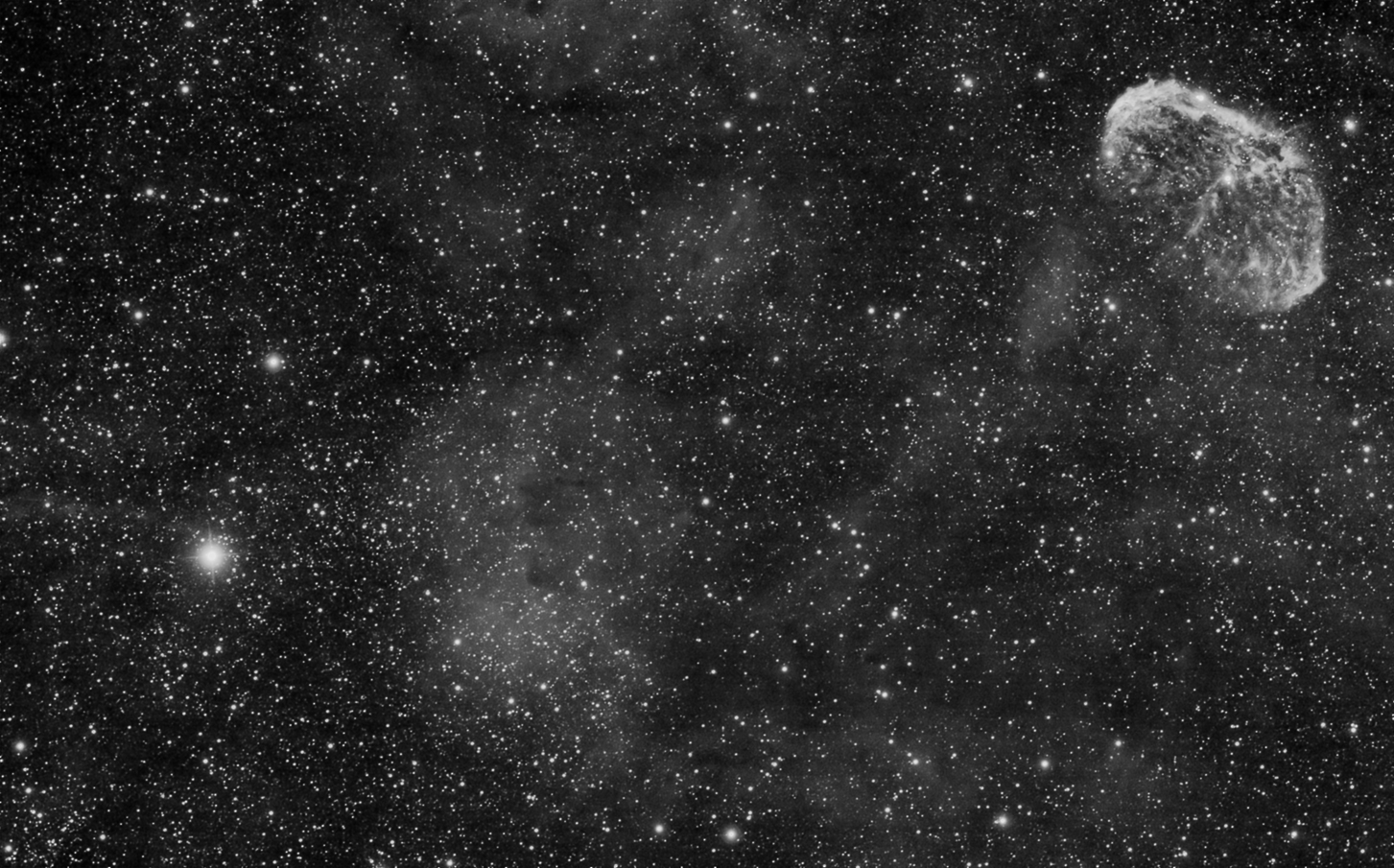
|
La nebulosa Crescent - NGC 6888 The Crescent nebula - NGC 6888 A.R. 20h14m00s - Decl. 37°58'00" |
|
Questa foto della nebulosa Crescent (NGC 6888)
nonché delle zone limitrofe, visibile nella costellazione del
Cigno,
è stata scattata nelle notti del 6, 9 e 10 agosto 2011 dal giardino della mia
casa ad Arcidosso (GR) al
fuoco diretto di un telescopio Takahashi TSA102 ridotto a f/6.3 su
montatura Gemini G41 Obs con FS2. A queste ho aggiunto una serie di foto scattate con un newton Altair Astro modificato la notte del 20 agosto 2011 con la medesima montatura e dal medesimo posto. La foto è la somma di 63 + 19 esposizioni da 12 minuti cadauna, con una fotocamera digitale Canon Eos 40D con filtro modificato e filtro Halfa Astronomik Eos clip da 13 nm, settata a 800 ISO che sono state effettuate con inseguimento mediante rifrattore 120/600 in parallelo e autoguida Atik 16IC. Successivamente i frames sono stati calibrati con DeepSkyStacker utilizzando complessivamente 178 dark, 124 flat, 124 dark dei flat e 124 bias. I files sono poi stati sommati con Registar. E' stato applicato uno stretching, maschera sfocata e riduzione del rumore usando Pixinsight LE e Photoshop CS2. Quasi al centro della foto è possibile vedere la nebulosa PN G75.5+1.7 Bolla di sapone (Soap Bubble Nebula) scoperta dall'astrofilo Dave Jurasevich il 6 luglio 2008. This photo of the Crescent Nebula (NGC 6888) and the surrounding areas, in Cygnus, was taken on august 6, 9 and 10, 2011. from the garden of my home in Arcidosso, in Italy, near Grosseto, at the prime focus of a Takahashi TSA102 telescope reduced at f/6.3 using a Gemini G41 Obs mount.. Then I added other frames taken the night of august 20, 2011, from the same place but using a newtonian Altair Astro telescope (8" f/4) I modified, using the same mount. The photo is the sum of 63 + 19 frames, each of 12 minutes, with a Dslr camera Canon Eos 40D Rebel (filter modified) plus Astronomik 13 nm eos clip filter, exposed at 800 ISO, guiding with a Atik 16IC autoguide on a refractor 120/600. About processing. I calibrated the frames with Deep Sky Stacker using 178 darks of 12 minutes each, 124 flats, 124 darks of flat, 124 bias. Then I stacked and summed the resulting frames with Registar. At least I processed the resulting file with stretching, unsharp mask, noise reduction using Pixinsight LE and Photoshop CS2. Almost in the centre of the photo you can see the PN G75.5+1.7 nebula (also known as Soap Bubble Nebula) discovered by amateur astronomer Dave Jurasevich on July 6th, 2008. |